2023 Honda Odyssey Review: The ultimate baby gadget (for better and worse)

Pros: ‘Magic’ middle row great for parents with small kids; plush ride; Honda reliability reputation
Cons: No cheaper base model; dreary to drive even for a minivan; no hybrid or AWD
The 2023 Honda Odyssey isn’t so much an automobile as it is the ultimate piece of parenting gear. From novel features like its “Magic” sliding second-row seats and available onboard vacuum to common-but-indispensable traits like remotely opening doors and gargantuan cargo space, it’s far more akin to a BOB Rambler, Britax Boulevard or MamaRoo – cleverly engineered items specifically designed to make parents’ lives easier. While being oriented toward kids and parents might seem obvious for a minivan, none are so unabashedly centered on that goal than the Odyssey.
While competitors attempt to hide their van-ness, the Odyssey lets its van flag fly. There was no attempt to add sporty or SUV-like flourishes outside, while inside, the dash has all the visual appeal of an ATM. The driving experience is similarly indifferent, characterized by loose steering and a pillowy ride (unlike earlier Accord-like Odysseys). It’s all about the kids here, and they don’t care if you’re getting feedback through the wheel or your eyes are treated to an interesting-looking dash.
They also probably don’t care about fuel economy, but that’s one of the few objective areas where the Odyssey trails its competitors. While its V6 engine is perfectly fine relative similarly powered vans, the Chrysler Pacifica offers an exceptional plug-in hybrid model while the Toyota Sienna is only offered as a hybrid that gets an estimated 36 mpg combined. The Odyssey gets 22 mpg, and while it’s more powerful, we’re guessing sacrificing some acceleration in favor of an estimated $1,000 per year on gas will be a trade worth making.
Interior & Technology | Passenger & Cargo Space | Performance & Fuel Economy
What it’s like to drive | Pricing & Trim Levels | Crash Ratings & Safety Features
What’s new for 2023?
The base LX is discontinued, making the EX the new base trim and the 2023 Odyssey base price therefore considerably higher. A new Odyssey Sport also debuts. It basically takes the EX-L trim and adds a black grille, wheels and exterior trim, plus red contrast stitching to the interior’s black leather. The interior ambient lighting is also red. The 2023 Odyssey is the first Honda to offer Honda Service Pass, which provides scheduled maintenance for two years or 24,000 miles.
What are the Odyssey interior and in-car technology like?
If you’ve just test-driven a Kia Carnival, Chrysler Pacifica or Toyota Sienna, the Odyssey cabin is bound to seem a bit dull. Materials quality is acceptable, and there’s no faulting Honda’s ability to screw things together, but the aesthetic is one of pure functionality. All of its competitors have made strides toward cabins that feel less van-like when behind the wheel – the Odyssey leans hard into its vandom.
To that end, though, it’s incredibly functional. There’s a walled gutter between the front seats that lets you securely plop down your purse. There’s a hidden drawer that can be partitioned to keep things from sliding about, plus another bin under the console’s roller door and a wireless charging pad on top trim levels. There are highly functional holders for cups and bottles alike in the console and doors, while you’ll find dedicated places to stash your devices in the doors and seatbacks. Top trim levels even come with a built-in vacuum.
The touchscreen infotainment system found on all but the base trim is easy to see and reach, and generally straightforward to use. We like the crisp graphics, intuitive menus and configurable tiles that let you put functions where you want them. We’ve had some freezing when using the standard Apple CarPlay, however, especially when also trying to use the car’s native navigation system (which is also a disappointingly sparse affair). We also generally prefer the interfaces of the Carnival and Pacifica, plus the Sienna’s available widescreen system.
There are other novel and surprisingly useful features available on top trim levels. There’s that in-car vacuum (which is now also offered by both Toyota and Chrysler). There’s also CabinWatch, which uses a wide-angle lens above the second row to let you see what’s going on in each of the seats, including into a rear-facing child seat (the Pacifica offers something similar). It’s paired with the CabinTalk system that lets you project your voice through the rear speakers and/or rear seat entertainment system’s headphones (the Sienna offers something similar to this). Threats of “don’t make me stop this car!” shall never be missed again.

How big is the Odyssey?
Outside, the Odyssey is effectively the same size as the Pacifica and Sienna (though it does weigh less). Their interiors are also so enormous that differences are basically moot points. That includes the amount of space behind their third-row seats, which we found to be even more immense than expected in the Odyssey. You can fit more back there than in the cargo areas of most compact and midsize crossovers (and exponentially more than you can behind the third rows of large crossovers).
Really, the difference among vans comes down to the functionality of their second-row seats. They all utilize different concepts, which cater to different owner needs and preferences. The Odyssey differs with its “Magic Slide” second-row seats. We go into those in depth in this Odyssey Driveway Test, along with their excellent ability to accommodate infant car seats, but in short, it’s a brilliant idea and well suited to parents of young children (although the Carnival’s own unique eight-passenger configuration comes close). Older kids would probably appreciate the far-sliding captain’s chairs in the seven-passenger Carnival and Sienna that provide far more sprawl-out space (the Odyssey’s limited fore-aft adjustment also results in a smaller gap between the seat and pillar for third-row access). Should you be prioritizing cargo versatility, the best bet is unequivocally the non-hybrid Pacifica’s fold away Stow ‘N Go seats.

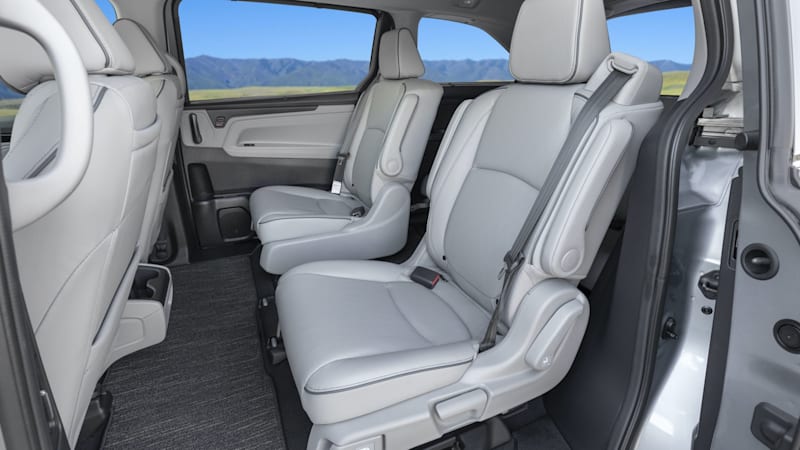
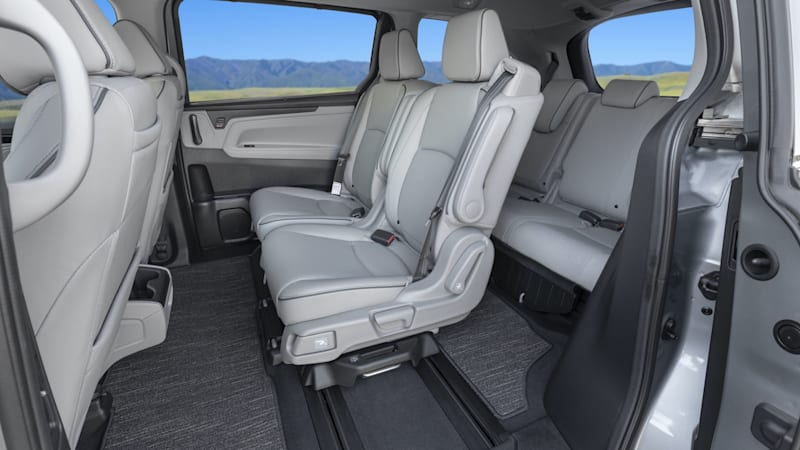
What are the Odyssey fuel economy and performance specs?
Every Odyssey features the same powertrain and drivetrain: a 3.5-liter V6 good for 280 horsepower and 262 pound-feet of torque paired with a 10-speed automatic and front-wheel drive. Unlike the Sienna and Pacifica, Honda does not offer a hybrid nor the option of all-wheel drive. The engine does shut down a bank of cylinders to save fuel, though, and automatically stops and starts when the van comes to a stop. Still, its fuel economy pales in comparison to those hybrids at 19 mpg city, 28 mpg highway and 22 mpg combined. The EPA says you’ll spend $1,000 more on a gas per year compared with the Sienna and possibly more compared with the Pacifica Hybrid.
What’s the Odyssey like to drive?
The Odyssey’s steering is surprisingly loose on center for a Honda and lacks precision. It required more attention and corrections when driving on a winding rural highway than we’d prefer (the lane-keeping assist system rears its head an awful lot), and doesn’t instill a great deal of confidence, let along engagement. Odysseys were once described as driving like big Accords. That’s not the case with the new one, and we prefer driving all of its competition more.
Now, with that big old caveat noted, the 2023 Odyssey is nevertheless supremely comfortable and quiet. Your passengers will be perfectly snug, happy and undistracted from whatever’s playing on their devices. The vast visibility and short front end make it easy to park, as does that loosey goosey steering. There’s also no shortage of power. Its 280 hp is more than enough to spin rubber from a stop with a heavy foot, and to get out of your own (and anyone else’s) way pulling out onto a road with limited visibility or merging with highway traffic. It actually sounds just macho enough to make you feel good about flooring your family hauler from time to time. Its standard 10-speed automatic transmission helps keep the revs in check in calm driving. There are even standard paddle shifters you can feel free to ignore unless you’re traversing steep hills or towing something behind you.
What other Honda Odyssey reviews can I read?
Honda Odyssey Infant Car Seat Driveway Test
We take a deep dive into the Magic Slide second row seats and see how an infant car seat works with the Odyssey.
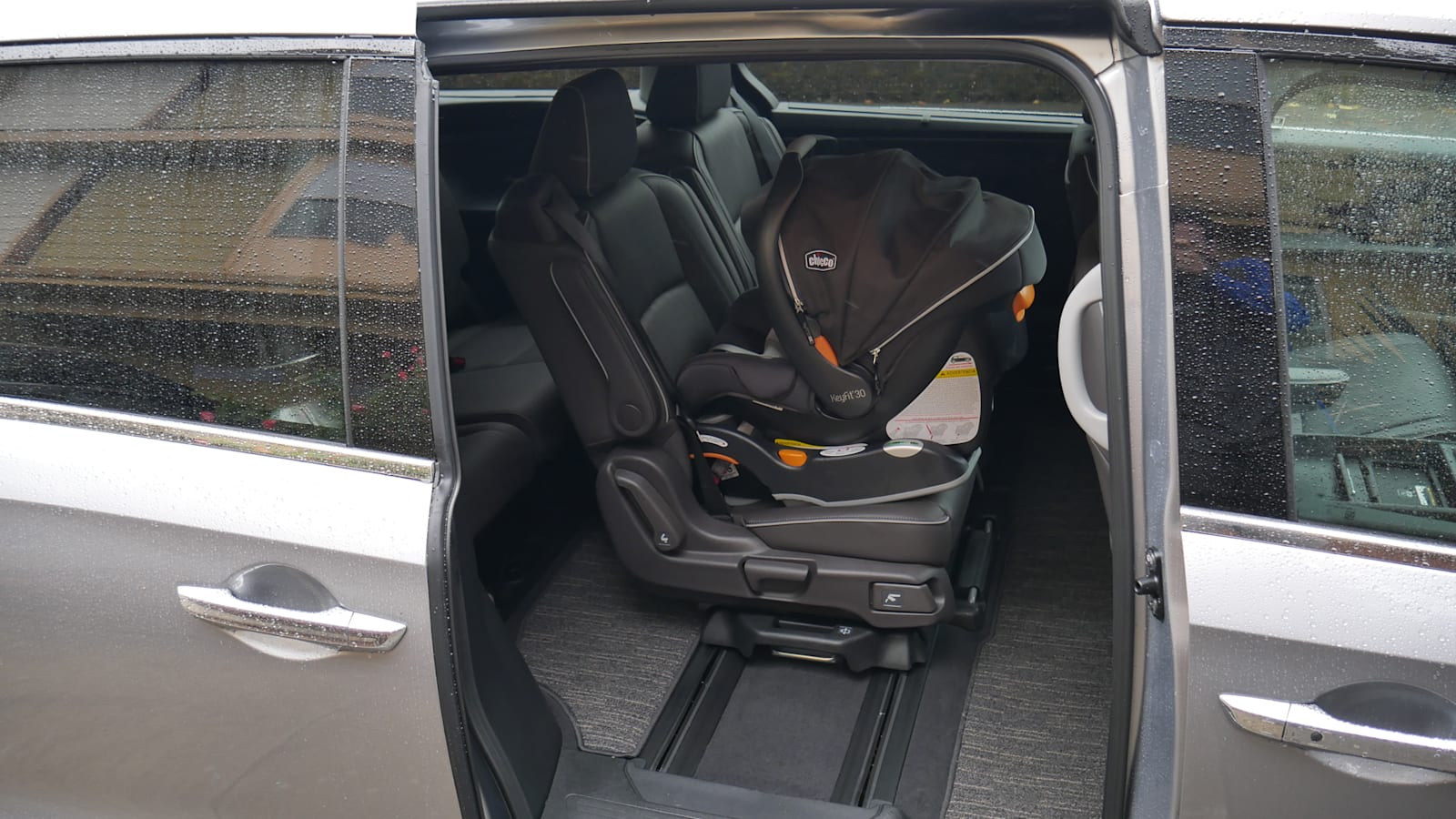
Honda Odyssey Luggage Test: How much fits behind the third row?
Did we know all our luggage would fit behind the third row? Oh yes. Were we still surprised by just how much space was left over? Also yes.
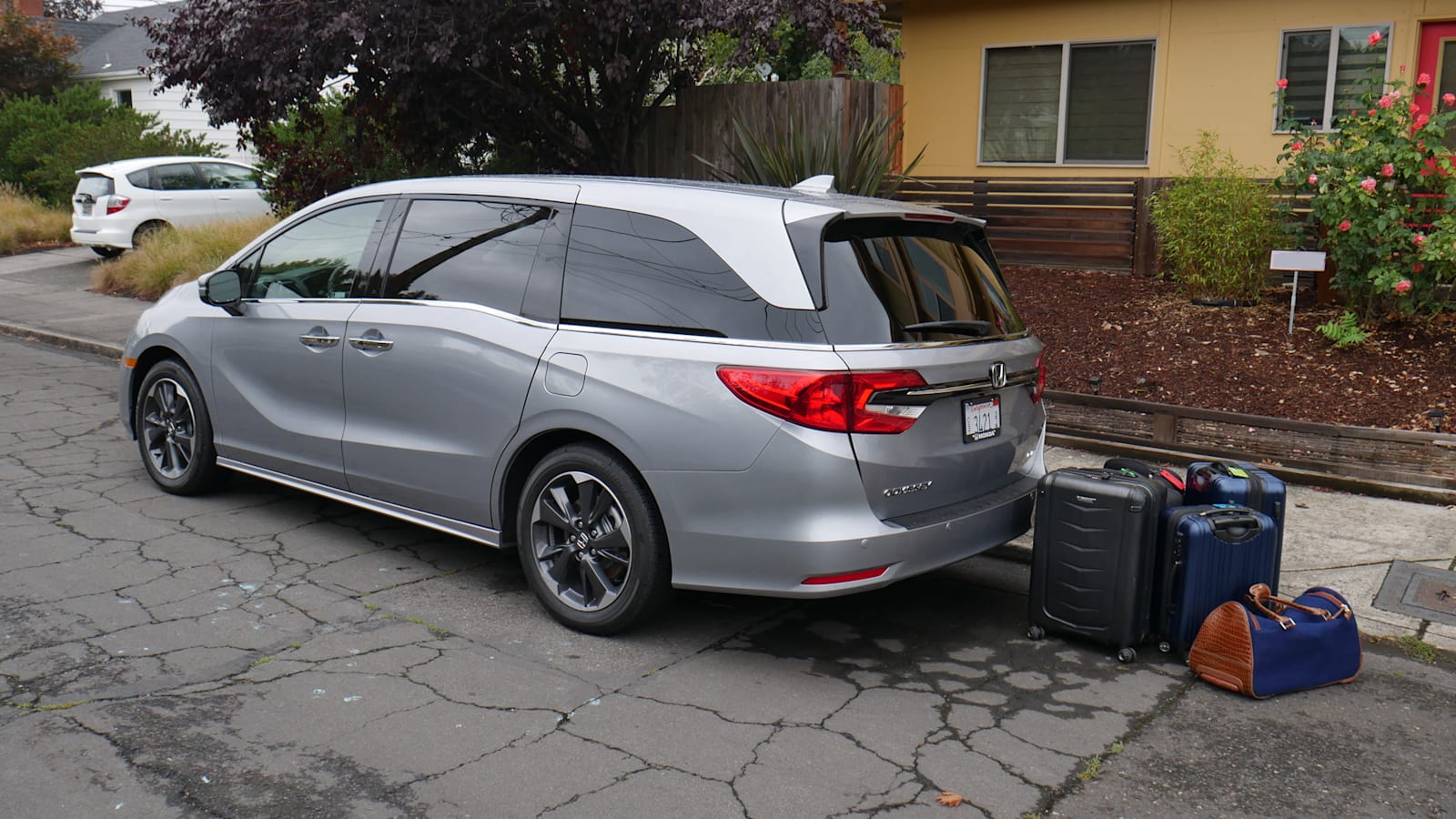
2021 Honda Odyssey First Drive Review
There were significant changes made to the current-generation Odyssey for 2021. This details them plus our first impressions on whether they made a difference.
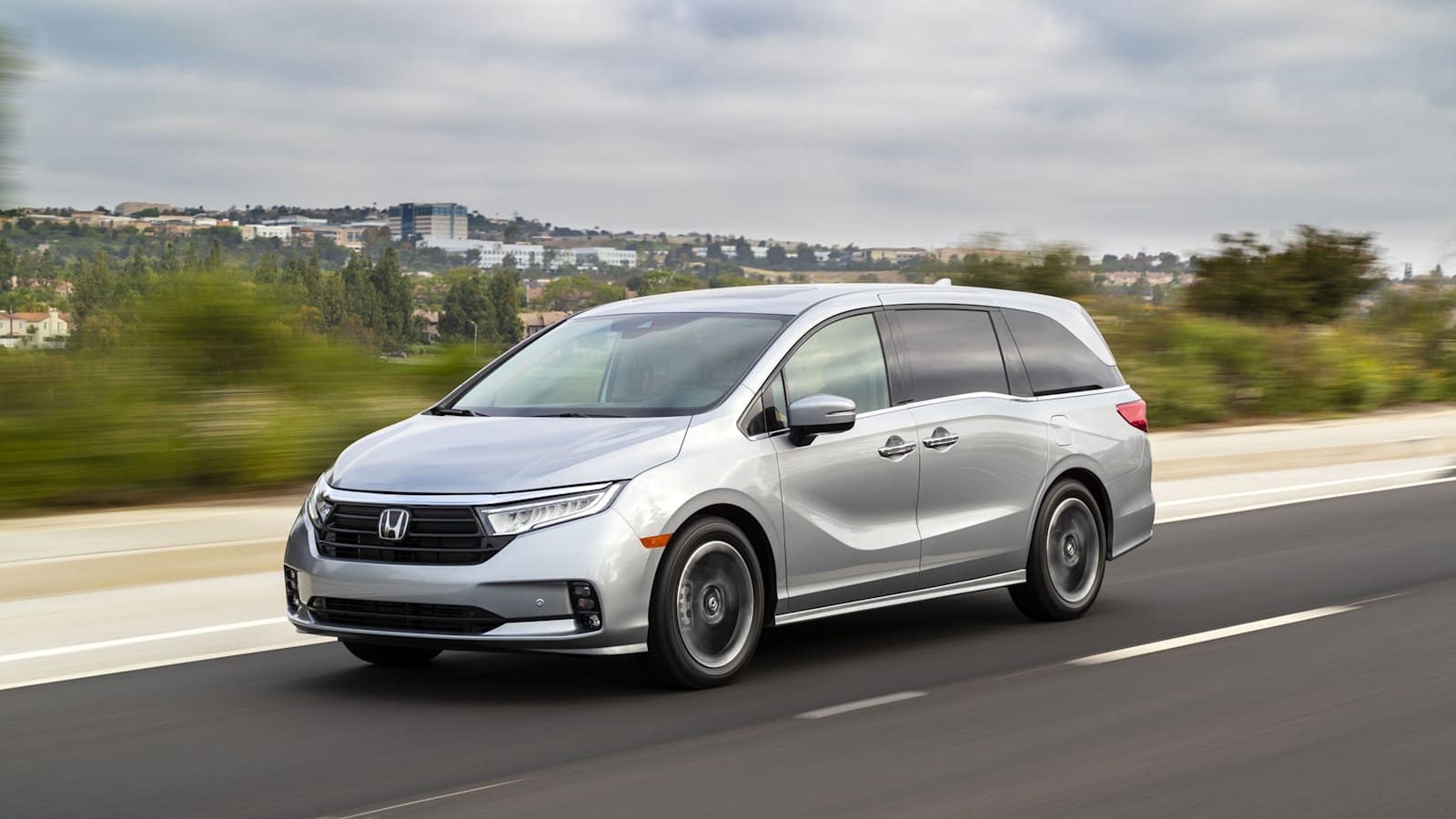
What is the 2023 Odyssey price?
Because the Odyssey no longer offers its base LX trim level, the entry-level 2023 Odyssey is the EX and therefore a rather hefty $38,635 with the $1,295 destination charge. That makes it the priciest minivan to get into, especially compared to the Kia Carnival. Things start to even out from there, but we will say that the Odyssey’s rather utilitarian interior makes the $50,765 Elite trim seem like poor value in the face of the high-lux range-topping rival trim levels. As such, the lower trim-level Odysseys are more competitive.
All prices below include the $1,295 destination charge.
EX: $38,635
EX-L: $41,705
Sport: $42,505
Touring: $44,450
Elite: $50,765
What are the Odyssey safety ratings and driver assistance features?
Every Odyssey comes standard with forward collision warning with automatic emergency braking and pedestrian detection, lane-departure warning and lane-keeping assist, blind-spot and rear cross-traffic warning, and adaptive cruise control (includes lane centering steering and stop-and-go capability).
The Odyssey received five out of five stars from the NHTSA for overall, frontal and side crash protection. The Insurance Institute for Highway Safety also gave it the best possible rating of Top Safety Pick+ for its top marks in every possible category but one: headlights, where it got an “Acceptable” grade. Even its LATCH anchors were given the best-possible rating of Good+ for their ease of use – something we can definitely confirm.
Related video:



